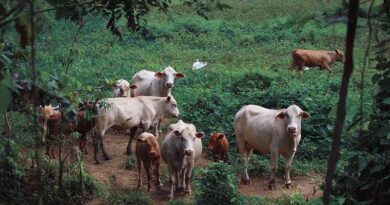Bioceres Crop Solutions Releases Scope 1 & 2 Greenhouse Gas Emissions Report
25 January 2024, Argentina: Bioceres Crop Solutions Corp. (NASDAQ: BIOX), a leader in the development and commercialization of productivity solutions designed to regenerate agricultural ecosystems while making crops more resilient to climate change, announced today the release of the company’s global greenhouse gas emissions report, available here.
The report takes inventory of the company´s fiscal year 2023 Scope 1 & 2 greenhouse gas emissions across all operations, spanning manufacturing plants, research and development campuses, and administrative offices in Argentina, Brazil, Estonia, and the United States. The calculations were undertaken by an independent third-party expert, Boundless Impact Research and Analytics, and follow GHG Protocol guidance established by the World Resources Institute and the World Business Council for Sustainable Development.
Since the FY21 baseline, the company has undertaken significant initiatives to reduce its global greenhouse gas emissions, primarily via transitioning operations to zero-emission renewable energy sources where available, investing in more energy-efficient utilities, machinery and vehicles—particularly with new construction and during facility upgrades, introducing monitoring equipment and software that provides real-time feedback on resource consumption and utilization, and pursuing net zero-waste certification for its operations.
During FY23, activities within Bioceres resulted in a total of 8,187 metric tons of CO2e, of which 66% are a result of Scope 1 emissions and 34% are a result of Scope 2 emissions. Bioceres achieved a 33.7% reduction in global Scope 2 emissions compared to the baseline year by transitioning the Davis, California campus and Bangor, Michigan plant to zero-emission, all-renewable energy sources. The company plans to transition three facilities in the Pergamino, Argentina campus, starting mid-calendar year 2024 with the expectation of replacing 40% of total electrical usage in those facilities.
“As an organization, our focus is to reduce emissions in agriculture through the adoption of our products. This starts with the monitoring and minimization of emissions in our own operations. We have taken important steps in the past two years to reduce our own footprint and improve our sustainability and energy efficiency efforts and will continue to do so as we expand our commercial activities globally,” said Federico Trucco, Chief Executive Officer.
Also Read: Exclusive: Why is Mancozeb important for UPL?
(For Latest Agriculture News & Updates, follow Krishak Jagat on Google News)















